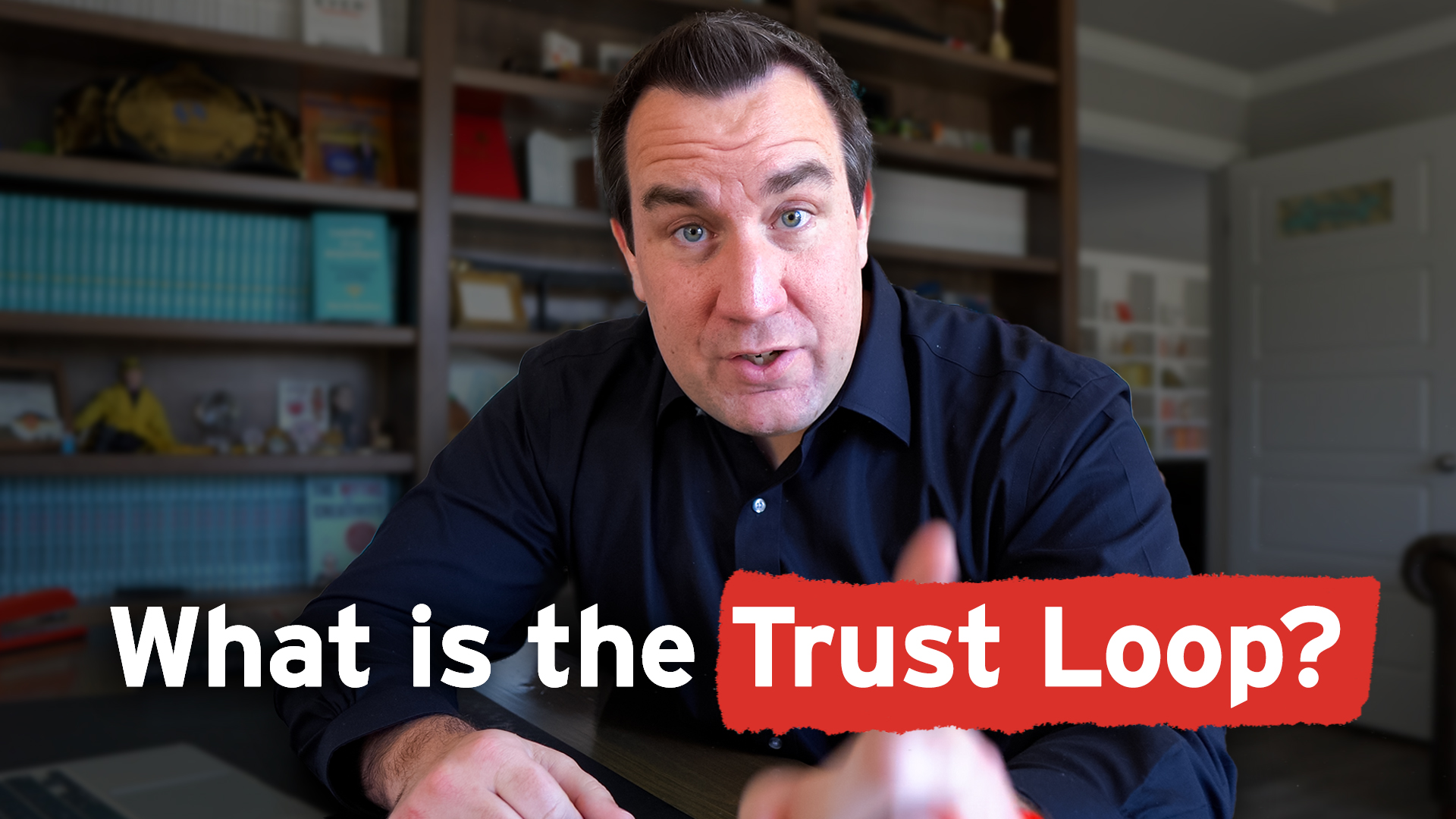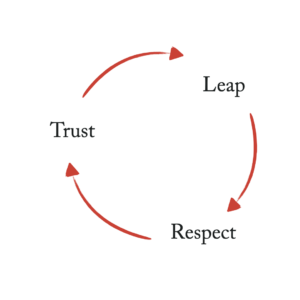
Most leaders understand that trust is essential to a high-performing team, but they don’t understand the trust loop. Whether you’re navigating a reorganization or welcoming a new team member, you’ve probably felt the urgency to “build trust.” And when that moment comes, it’s common to reach for the usual tools—team-building activities, personality assessments, maybe even a few awkward trust falls (hopefully not literally).
These tactics are well-intentioned, but they miss the mark.
They miss the mark because they stem from a fundamental misunderstanding of how trust actually works. We think of trust as something we must “build” or “earn.” But on teams that truly thrive, trust isn’t built. It isn’t earned. It’s reciprocated.
The Problem With “Building” Trust
When leaders treat trust like a structure to be built—brick by metaphorical brick—they tend to focus on surface-level signals. They organize offsites. They share personality test results. They do a round of icebreakers or a few forced group lunches. These actions might create a temporary bump in connection, but they rarely lead to sustained, deep trust.
Why? Because they ignore how trust naturally develops between people.
Trust isn’t a project. It’s a process. And it starts with one person’s willingness to be vulnerable.
The Origins Of Trust
Paul Zak, a neuroscientist who’s spent decades researching trust, has uncovered something surprising: trust is a biological response. More specifically, it’s linked to the brain chemical oxytocin. When oxytocin is released in our brains, we’re more likely to feel trusting—and to be trusted.
Here’s the really interesting part: Zak found that when people feel trusted by someone else, their own oxytocin levels spike. That makes them more likely to trust that person back. In other words, when someone takes a risk to show they trust you, you become more likely to trust them in return.

That’s the start of what I call the trust loop.
You build trust over time and that trust leads people to take leaps of faith—like signaling vulnerabilities or sharing new ideas. If those leaps are met with respect, the loop turns, and trust grows even stronger. Trust begets trust. One act of vulnerability triggers another. When repeated over time, it creates a culture where people feel safe to speak up, take risks, and contribute fully.
Where Leaders Break the Trust Loop
The key moment in this loop is what happens after someone takes a risk.
Maybe a teammate pitches an idea that’s unconventional. Maybe they admit a mistake. Maybe they push back on what feels like team consensus. Each of these is a leap of faith—an interpersonal risk. And how you respond as a leader determines whether the trust loop continues…or breaks.
If your response is dismissive, judgmental, or indifferent, the loop shuts down. That person—and everyone watching—learns it’s not safe to take that kind of risk again.
But if you meet that leap with respect, you create a moment of trust that strengthens the entire team.
So how do you keep the loop going?
How to Spark—and Sustain—the Trust Loop
To create a team culture fueled by reciprocal trust, leaders need to go first. You can’t wait for others to “earn” your trust. You have to give it freely, through intentional behaviors that signal vulnerability and create psychological safety.
Here are five ways to do that:
1. Signal Vulnerability. You don’t need to turn your team meetings into therapy sessions. But you do need to show that you’re human. That could mean admitting when you don’t know the answer. It could mean sharing a time you made a mistake or acknowledging a weakness in your leadership style. These moments send a powerful message: I trust you enough to be real with you.
And when people see that, they’re more likely to be real with you in return.
2. Celebrate (the Right Kind of) Failure. Failure is inevitable—even for high performers. What matters is how you respond. When a project goes sideways, don’t bury it. Don’t finger-point. Instead, treat it as a learning moment. Celebrate the feedback it provides. Make it clear that trying, learning, and improving are more important than avoiding mistakes.
This doesn’t mean giving blanket amnesty to poor performance. But it does mean normalizing small, intelligent failures as part of the team’s growth. When people see that failure doesn’t equal punishment, they’re more willing to take creative risks.
3. Share Privileged Intel. Nothing says “I trust you” like sharing information. As a leader, you often have access to broader context that your team doesn’t. Sharing that context—strategic updates, behind-the-scenes insights, even just a preview of what’s coming next—sends a message: I trust you with the full picture.
If you really want to signal trust, preface it by saying, “What I’m about to share stays in this room.” You’ll see people lean in. They’ll remember that you let them in—and they’ll be more likely to reciprocate.
4. Respect Every Leap. When someone does take a risk—whether it’s pitching a wild idea or disagreeing with you—match that leap with respect. And the most powerful way to do that? Listen. Actively listening. Make eye contact. Don’t interrupt. Ask follow-up questions. Show that you’re not just hearing them—you’re curious to understand them.
Because the fastest way to feel disrespected is to feel unheard, and the easiest way to signal respect is to show you’re truly listening.
5. Treat Conflict as Collaboration. One of the biggest risks someone can take is disagreeing with their boss. So, if you want a high-trust team, you must treat disagreement as a good thing. When someone challenges your thinking, don’t push back on the person. Explore the idea. Ask about their assumptions. Find out what they see that you might be missing.
Even if you end up staying with your original plan, they’ll feel heard—and be more likely to speak up again. And the rest of the team will take note, too.
The Trust Loop in Action
Whenever you match someone’s leap with respect, their trust in you grows. That makes them more likely to take a bigger leap next time. And when that happens, other people see it—and feel safe to leap themselves. That’s momentum. That’s how trust spreads on a team.
It’s not about a big, dramatic moment. It’s about small moments of vulnerability and respect, repeated over time. That’s what fuels the trust loop. And that’s what transforms a group of individuals into a real team.
So, stop trying to build trust. Stop waiting for people “earn” your trust. Instead, start giving it. And start the trust loop.

About the author
David Burkus is an organizational psychologist, keynote speaker, and bestselling author of five books on leadership and teamwork.